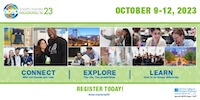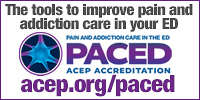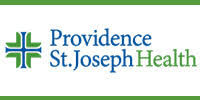Monkeypox Can Spread In Three Ways. Here’s What To Know And How To Avoid Infection.
By Katie Camero
Just two months after the virus landed in the US, monkeypox has been declared a national public health emergency — a déjà vu nightmare for the majority of Americans who are tired of being sick and living through unprecedented times.
Even though experts don’t expect monkeypox to be the next COVID, the virus still isn’t something you want to mess with, particularly if you’re immunocompromised, pregnant, or have certain skin conditions, like eczema. But at least this time around, there are effective treatments and vaccines available for those exposed to the virus or at risk of serious disease.
We spoke to several infectious disease experts to better understand how monkeypox spreads, what activities are riskiest at this time, and how to avoid infection as cases rise globally.
“Risk is not black and white. There’s a lot of nuance around it in general, and that’s not just unique to monkeypox,” said Dr. Aniruddha Hazra, an infectious disease doctor with the University of Chicago specializing in LGBTQ health. “This is about figuring out what you feel comfortable doing while still enjoying your life and doing the things you want to do.”
There are three ways you can catch monkeypox: direct skin-to-skin contact with an infected person; touching contaminated surfaces, objects, or fabrics; and contact with respiratory secretions like mucus.
It’s still unclear whether people without symptoms can spread the virus, if urine, feces, semen, or vaginal fluids can infect others, or how much of a role respiratory secretions play in transmission.
Direct skin-to-skin contact
The dominant way to catch and spread monkeypox is by touching an infected person who has rashes, scabs, bodily fluids, or lesions on their skin, which can resemble a tiny pimple or a pus-filled bump that can be as big as the size of a marble.
But a light brush against or even a handshake with a potentially infectious person doesn’t necessarily mean you caught the virus. It takes a lot more contact than that. So far, the majority of people who have contracted the virus in the US are men who reported having sex with other men, though it’s unclear if transmission is occurring in these communities during other activities, too, like hugging, partying, etc.
“You have to be rubbing against somebody's body, and then they also have to have skin lesions,” said Dr. Jessica Justman, an epidemiologist and infectious disease clinician at the Columbia Mailman School of Public Health. “Shaking hands is not the same as intimate sexual contact. It’s so brief when you shake hands with somebody that it just doesn’t make sense to me that that would actually be a way of transmission.”
The World Health Organization in July suggested that men who have sex with men should “for the moment” reduce partners and reconsider sleeping with new people as a way to slow monkeypox spread.
Sometimes rubbing against an infected person (aside from sex) isn’t enough to get you sick, according to Dr. Berry Pierre, an internal medicine physician who fights monkeypox misinformation on TikTok.
“Unless you have breaks in your skin, [the virus] being on your skin is not going to seal the deal,” said Pierre. “You still have to introduce it inside your body” by touching your face, mouth, nose, or genitals.
Still, it won’t hurt to wash your hands often, especially before and after eating. After all, we’re still in the middle of a deadly pandemic. (More than 300 people are still dying each day from COVID in the US.)
Other activities that involve extended close and skin-to-skin contact like raves and circuit parties, for example, do confer some risk, but that doesn’t mean you have to avoid these events if that’s what you enjoy doing.
“You can still enjoy yourself and have a good time, but maybe keep your shirt on or try to stick with friends or people you know throughout your time at a party or rave, etc.,” Hazra said. “Not meaning you have to deprive yourself of these experiences, but you can continue to do that but maybe in a safer way.”
Touching contaminated surfaces, objects, or fabrics
There isn’t enough data to know for sure the likelihood of contracting monkeypox by touching contaminated surfaces or materials, but one new study from Germany, published in June, shows the virus indeed survives on different surfaces — but whether these viral particles can infect someone remains unknown.
Researchers swabbed the hospital rooms of two monkeypox patients (both men in their 30s) on day four of their hospital stay and found monkeypox virus DNA on all the surfaces and materials the patients touched, with the highest loads in their bathrooms and toilet seats, as well as cabinet door handles “presumably” touched by medical staff.
Samples collected from researchers’ gloves, a soap dispenser, and a towel on one of the patients’ beds were able to infect cells in a lab dish, but the team couldn’t confirm if an actual infection is possible via contact with these surfaces, partly because we don’t know how much virus is needed to accomplish that.
A separate 2020 study found that a nurse in the UK contracted monkeypox in 2018 after touching a patient’s contaminated bedding, despite wearing a disposable apron and gloves.
It’s unclear how long monkeypox survives on different surfaces, but the CDC says that orthopoxviruses overall can survive in homelike settings for weeks or months, and that porous materials like bedding and clothing may harbor the germs for longer periods than nonporous ones like plastic, metal, and glass. One study found live monkeypox virus survived inside an infected person’s home for 15 days after they left. In general, the virus lives longer in dark, cool, and low-humidity environments.
Yet experts aren’t convinced touching contaminated surfaces is an effective means of transmission. If it was, the data would have shown that by now, especially in Europe and Canada where monkeypox has been spreading since the beginning of May, Hazra said. It is possible, however, to get sick this way if you’re living with an infected person, sharing the same surfaces and materials for hours or days at a time.
This means you don’t have to fear touching groceries or mail, riding on public transportation, trying on clothes in a store dressing room, working out in a gym, or relaxing in a spa, the experts we spoke to said — at least not at this time.
“We’re really in this realm of what’s theoretically possible versus what is practically likely to happen, and I think getting monkeypox by trying on clothing in a store that somebody who is incubating monkeypox might have tried on just seems really far, far away from something that would happen,” Justman said, “even if there were kind of a theoretical dotted line.”
“This is about direct skin-to-skin contact,” she added.
With that being said, you can take extra precautions if it makes you more comfortable.
“It’s an extremely low risk of transmission, but it’s not zero,” Pierre said of surface transmission. “That’s why we caution our patients that this is a possibility that you need to be aware of.”
The good news is that the virus is sensitive to soaps, disinfectants, detergents, and other cleaning products, the CDC says. So a simple wipe-down or wash in the laundry should destroy the virus on any surface or material, which is particularly important if you’re caring for or living with an infected person.
Airborne transmission
The current monkeypox outbreak has not revealed any evidence of airborne transmission, but that doesn’t mean it can’t or hasn’t happened.
A study of hospitalized monkeypox patients in the UK that has yet to be peer-reviewed found that five out of 15 air samples collected before and during a bedding change were positive for monkeypox. Three of the four air samples taken during a bedding change were positive, which researchers said “highlights the importance of suitable respiratory protection equipment when performing activities that may re-aerosolise infectious material within contaminated environments.”
The CDC says you can catch monkeypox by coming in contact with respiratory secretions, which could mean physically touching mucus from a sneeze, for example, or inhaling them when sharing space with a sick person.
Wearing a mask is your best option to avoid infection this way, the agency says.
However, the agency acknowledges that it’s unknown how often monkeypox is spread through respiratory secretions or when a person is most likely to spread the virus via these secretions.
Researchers from the UK study said their work “supports the theory” that monkeypox may not only be present in large respiratory droplets, but also in aerosols and suspended skin particles or dust.
Although the current outbreak is primarily driven by sexual contact, Justman said it’s tricky to rule out airborne transmission because you share the same air space while having sex. “But I really want to convey that for now the main risk is direct skin-to-skin contact.”
“We are always learning as we go along,” Justman said. “Monkeypox is not a brand-new virus the way COVID was, but we’ll continue to learn more and that means what we understand and what we recommend will change. That is the nature of public health recommendations that are based in science.”
 Join/ Renew
Join/ Renew







